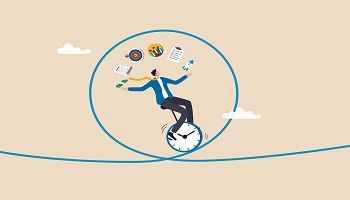The Pitfalls Of Efficiency: Process Improvement Is A Balancing Act
Business analysis work often involves improving processes. This might include simplification of a process, reengineering or automation. When used well, IT can be used to enhance (or even completely rethink) a process. The ideal outcome is to design a process that is quicker, more convenient and more cost-effective than what it replaces.
When aiming for efficiency, it’s important to ask “for whom are we optimizing this process?”. This might sound like an odd question to ask, but often there’s a fine balancing act. A process that appears very efficient for a company might actually be very inefficient and inconvenient for its customers. Standardizing a procurement process might create internal efficiencies for the company involved, but might place additional work on the company’s suppliers.
An Example: “No Reply” Secure Email
I was recently a customer of a company that would send correspondence via secure email. I’d receive a notification via regular email, and I’d then need to log in to the company’s secure email portal to read what they had sent me. This was fine, except the emails they sent were all from a ‘no reply’ address. While the secure email system they had implemented literally had a ‘reply’ button, there was a disclaimer on every email they sent which said “don’t reply, as we won’t read what you send us” (OK, it wasn’t that blunt, but you get the idea!).
This led to the crazy situation where the only way of replying to their secure emails was to either call via phone (and queue for 45 minutes), or put a reply in the mail.
This is an example of a situation where convenience and savings are predominantly biased towards the company, with some minor benefit for the customer. Prior to sending secure email, they would put correspondence in the regular mail. Moving this to an electronic platform presumably saves in printing, postage and stamps. It’s of marginal benefit to customers too, as they receive correspondence quicker (providing they look at their email regularly).
But the real customer benefit would have been to be able to correspond and reply with the company via secure email. Ironically, by implementing the solution the way that they did I suspect their ‘no reply’ mailbox is actually full of replies from customers who didn’t read their disclaimer!
Advertisement
There is no “right”, it’s a balance
As a customer, I found the situation frustrating, but there is no inherent or universal ‘right’ answer here. It might be that the company in question had deliberately chosen not to accept incoming secure email for compliance reasons, or perhaps they feared they’d be flooded with lots of customer inquiries as they are now ‘too easy’ to contact (although I’d argue that if this is the case then there’s probably a bigger root cause they ought to be contending with!).
The point here is that it should be a conscious balancing act. It is all too easy to create a situation that is more efficient for one group of stakeholders, but actually worse for another. An employer who decides to streamline their process for employees who need to claim travel expenses might decide that they can save time if they ask their employees to input more data at the time they submit their claim. If they get the employee to select where the expense was incurred, the amount of sales tax that was included in the expense, the category of cost and so forth, then this saves time later. Yet an employee who isn’t a tax expert might find this frustrating (“Is train travel exempt, or zero-rated for sales tax?”). Of course, in reality this will likely affect the quality of data too, as people try their best (but don’t know which of the different tax code options to choose).
This is a specific example, but it highlights a wider point: it’s important to consider process improvements from the perspectives of the stakeholders impacted. This involves considering what efficiency as well as effectiveness looks like for each key group.
As with so much in business analysis, stakeholder identification, engagement and empathy is key!




